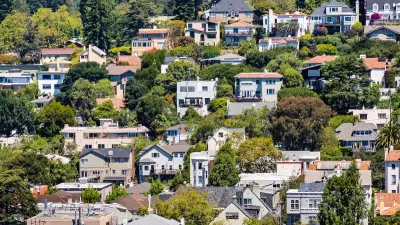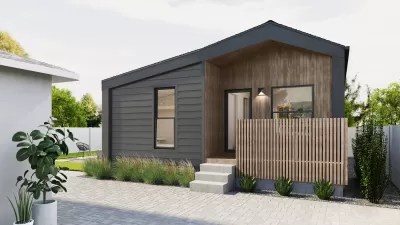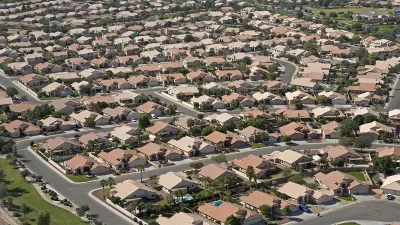Incremental changes to density on single-family parcels could boost the nation’s housing stock without dramatic impacts at the neighborhood level.

A new analysis shows that even small-scale upzoning in metropolitan areas could provide a substantial amount of new housing. '[Issi Romem] found that even modest densification efforts could have significant impact nationwide—across the 17 metro areas analyzed, allowing 10 percent of single-family lots to house two units instead of one could yield almost 3.3 million additional housing units—and especially in California," writes Patrick Sisson.
In addition, Romem argues that such upzoning, which would largely involve accessory dwelling units and smaller multi-family residential buildings, would not drastically change the character of neighborhoods. The densification would be less concentrated than other housing strategies, but it would provide environmental benefits and also keep home prices from increasing substantially.
As a result, it would be a more politically feasible alternative in a state like California. "It’s the 'missing middle' proposal, a reference to types of smaller multi-unit housing structures that traditionally provided more affordable housing, but tend to not be built today due to land costs and other economic pressures," adds Sisson.
FULL STORY: Why California, and the nation, shouldn’t be afraid of density and upzoning

Manufactured Crisis: Losing the Nation’s Largest Source of Unsubsidized Affordable Housing
Manufactured housing communities have long been an affordable housing option for millions of people living in the U.S., but that affordability is disappearing rapidly. How did we get here?

Americans May Be Stuck — But Why?
Americans are moving a lot less than they once did, and that is a problem. While Yoni Applebaum, in his highly-publicized article Stuck, gets the reasons badly wrong, it's still important to ask: why are we moving so much less than before?

Using Old Oil and Gas Wells for Green Energy Storage
Penn State researchers have found that repurposing abandoned oil and gas wells for geothermal-assisted compressed-air energy storage can boost efficiency, reduce environmental risks, and support clean energy and job transitions.

Updating LA’s Tree Rules Could Bring More Shade to Underserved Neighborhoods
A new USC study finds that relaxing Los Angeles’ outdated tree planting guidelines could significantly expand urban tree canopy and reduce shade disparities in lower-income neighborhoods, though infrastructure investments are also needed.

California's Canal Solar Projects Aim to Conserve Resources and Expand Clean Energy
California’s Project Nexus has begun generating electricity from solar panels installed over irrigation canals, with researchers and state agencies exploring statewide expansion to conserve water and boost clean energy production.

HHS Staff Cuts Gut Energy Assistance Program
The full staff of a federal program that distributes heating and cooling assistance for low-income families was laid off, jeopardizing the program’s operations.
Urban Design for Planners 1: Software Tools
This six-course series explores essential urban design concepts using open source software and equips planners with the tools they need to participate fully in the urban design process.
Planning for Universal Design
Learn the tools for implementing Universal Design in planning regulations.
Heyer Gruel & Associates PA
City of Moreno Valley
Institute for Housing and Urban Development Studies (IHS)
City of Grandview
Harvard GSD Executive Education
Salt Lake City
NYU Wagner Graduate School of Public Service
City of Cambridge, Maryland





























